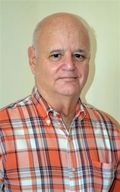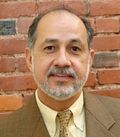Habiendo dicho esto, escupió en tierra, e hizo barro con la saliva y le untó el barro en los ojos al ciego,
(John 9:6)
y le dijo: "Ve y lávate en el estanque de Siloé" (que quiere decir Enviado). El ciego fue, pues, y se lavó y regresó viendo.
(John 9:7)
Entonces los vecinos y los que antes lo habían visto que era mendigo, decían: "¿No es éste el que se sentaba y mendigaba?"
(John 9:8)
El es," decían unos. "No, pero se parece a él," decían otros. El decía: "Yo soy."
Entonces le decían: "¿Cómo te fueron abiertos los ojos?"
(John 9:10)
El respondió: "El hombre que se llama Jesús hizo barro, lo untó sobre mis ojos y me dijo: 'Ve al estanque de Siloé y lávate.' Así que fui, me lavé y recibí la vista."
(John 9:11)
¿Dónde está El?" le preguntaron. Y él les dijo: "No lo sé."
(John 9:12)

